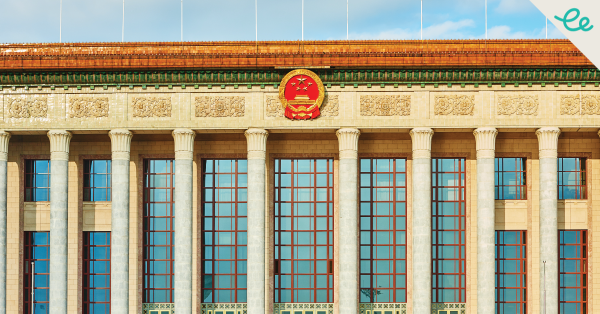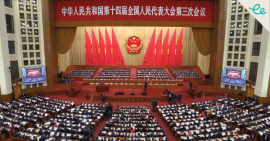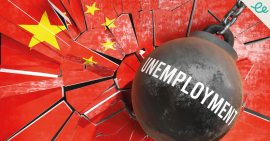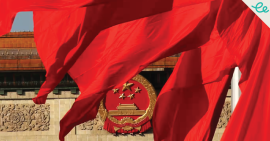China’s National People’s Congress (NPC), commonly referred to as the Two Sessions with its simultaneous event the Chinese People’s Political Consultative Conference, sets the government’s course of action for the rest of the year. It ended this week, offering little comfort to observers seeking an immediate boost to economic sentiment.
This should not have been a surprise. Xi Jinping has communicated his policy priorities clearly since taking office in 2012. With this being the first NPC to take place entirely under the guidance of his hand-picked team, sudden divergence away from his vision was not on the cards. Where observers see economic fires needed to be immediately put out, the government sees security problems to be ironed out through slow adjustment and consolidation. The key lesson of this year’s NPC is that security-led growth is the new normal for China.
Balancing Economic Priorities and Security Concerns
The government’s commitment to a 5% GDP growth in 2024 target matched expectations. Most commentators saw the target as ambitious, with the country no longer benefiting from the low base for comparison that helped China achieve an expansion of 5.2% last year. But Xi Jinping has long emphasised the importance of quality growth over quantity. The target growth rate is now little more than a signal of the kind of mindset that the leadership want their juniors to adopt for the coming year. In this light, the 5% is neither low enough to spur fresh doubt about the economy nor high enough to undermine previous messaging around quality growth.
The headline initiative of the NPC was therefore ‘new productive forces’. The latest phrase to capture the government’s focus on indigenous innovation, whether establishing a world-leading position in hi-tech supply chains or the digitalization of traditional industry, ‘new productive forces’ are intended to be at the core of a new growth model that Beijing hopes will propel the Chinese economy for decades to come.
But these ‘new productive forces‘ also demonstrate the close intertwining of the country’s economic agenda with security, which now hangs over almost every aspect of Chinese policymaking. Indigenous innovation is not only an economic driver, but also essential to China’s ability to resist geopolitical pressure, and therefore maintain national security. The intensification of the US’s restrictions on Chinese access to semiconductor technology in October 2023 underlined the urgency of reducing reliance on foreign imports if China is to achieve its development goals.
Even the Work Report’s references to consumption were within a framework of driving growth in areas key to this strategy, listing increased purchases of NEVs and an upgrade of consumer appliances listed as target areas. This is consumption as supply-side reform, not a genuine commitment to the consumption-driven growth long mooted as a necessary part of solving China’s present economic issues.
To fund these ambitions, the government proposed the issuance of Rmb1trn ultra-long special treasury bonds, focusing on major national strategies and ‘building security capabilities’. This latter phrase is likely to indicate increased manufacturing capacity that can ensure continued supply of key technologies. At a Tuesday press conference, PBOC head Pan Gongsheng indicated room for further cuts in the reserve requirement ratio (RRR) to support the funding of these bonds.
Belt-Tightening Measures
Another major theme woven through the discussions at the NPC and at the provincial Party Congresses in January is belt-tightening at the local level. Combined with growth provided by ‘new productive forces’, this will be the primary method by which the central government hopes to deal with mounting local debt.
The most obvious result is cancelled infrastructure projects. The State Council in January ordered 12 provinces to delay or halt infrastructure construction projects where under half of planned investment had been completed. These cancellations suggest that the government does not want to fall back on indiscriminate infrastructure investment to prop up economic growth. But Beijing is unlikely to abandon the investment policy lever completely.
The wait and see adjustment approach also explains the absence of measures expected to target the more headline-grabbing issues the Chinese economy has faced. Most importantly, the real estate market received only a passing mention in the report.
Loathe to reflate bubbles and undermine financial security, the government has instead taken the long view. The State Council’s recent Document 14 outlined a dual housing market policy that requires government subsidised housing as a foundation for the re-emergence of commodity housing. The absence of Xi Jinping’s mantra that ‘houses are for living in, not for speculation’ is explained by this plan, rather than a desire to signal a retreat from previous policies.
But the timeline for success is uncertain, and Beijing’s operating logic often unclear. Unfortunately, the cancellation of the Premier’s traditional press conference following the delivery of his work report denied the government a key opportunity to provide clarity around its approach to these issues. This was filled in to an extent by the press conference held the next day and led by the heads of the key organisations responsible for economic performance.
The New Normal of Security-Modulated Growth
For now, the trajectory for China’s economic strategy is clear – growth will be modulated by security. Investors and multinationals operating in China will need to learn this by heart if they wish to respond effectively to the changes that are in store and mitigate their impact on their bottom line.
This new normal suggests that relief for investors may be limited. The focus on security will bring about its own set of challenges, both domestically and internationally.
Most immediately, the NPC underlined how China sees itself in a changing world. While the previous year’s commitment was to uphold the international order, this year’s report talked of an ambition to ‘reform the global governance system.’
The calmer rhetoric that prevailed over the last year did not mark the end of ‘wolf warrior’ diplomacy. Beijing remains clear eyed about its long-term goal to reshape the international sphere in its own interest.
Looking ahead, the US election – in which both candidates will likely outcompete each other to take a hawkish position – heralds further turmoil for China. Pressure for further containment of China’s technological ambitions will likely further consolidate the government’s perception that its chosen path is the right one.
If you want to learn more about China’s economic and market outlook in 2024, register for Enodo Economics’ free trial.









Comments are closed.